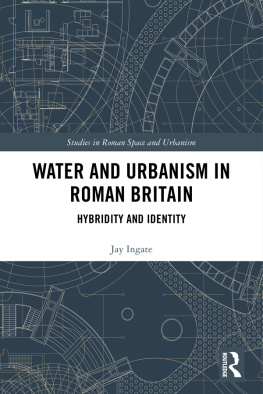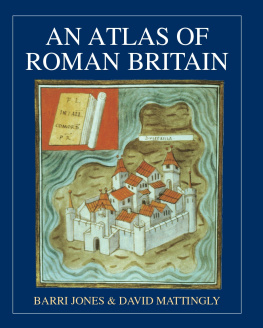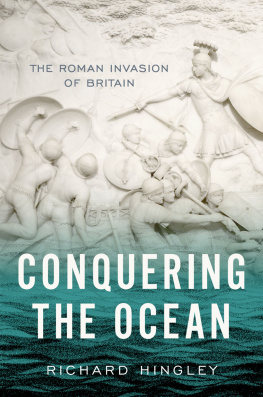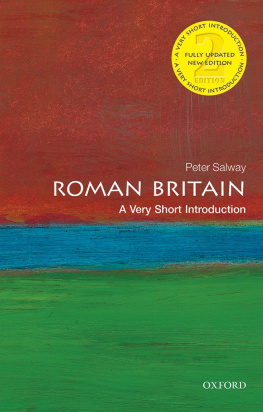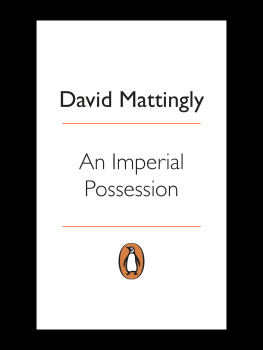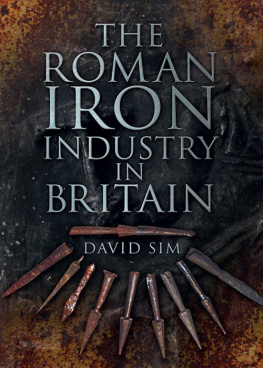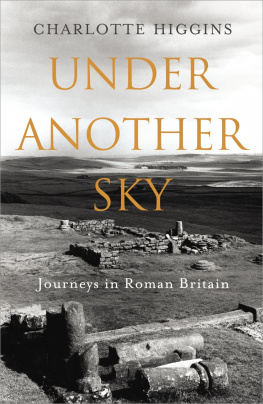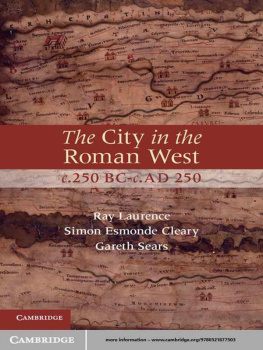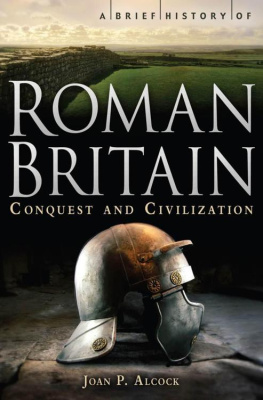Ingate Jay - Water and Urbanism in Roman Britain
Here you can read online Ingate Jay - Water and Urbanism in Roman Britain full text of the book (entire story) in english for free. Download pdf and epub, get meaning, cover and reviews about this ebook. publisher: Taylor & Francis (CAM), genre: Science fiction. Description of the work, (preface) as well as reviews are available. Best literature library LitArk.com created for fans of good reading and offers a wide selection of genres:
Romance novel
Science fiction
Adventure
Detective
Science
History
Home and family
Prose
Art
Politics
Computer
Non-fiction
Religion
Business
Children
Humor
Choose a favorite category and find really read worthwhile books. Enjoy immersion in the world of imagination, feel the emotions of the characters or learn something new for yourself, make an fascinating discovery.
- Book:Water and Urbanism in Roman Britain
- Author:
- Publisher:Taylor & Francis (CAM)
- Genre:
- Rating:4 / 5
- Favourites:Add to favourites
- Your mark:
- 80
- 1
- 2
- 3
- 4
- 5
Water and Urbanism in Roman Britain: summary, description and annotation
We offer to read an annotation, description, summary or preface (depends on what the author of the book "Water and Urbanism in Roman Britain" wrote himself). If you haven't found the necessary information about the book — write in the comments, we will try to find it.
Water and Urbanism in Roman Britain — read online for free the complete book (whole text) full work
Below is the text of the book, divided by pages. System saving the place of the last page read, allows you to conveniently read the book "Water and Urbanism in Roman Britain" online for free, without having to search again every time where you left off. Put a bookmark, and you can go to the page where you finished reading at any time.
Font size:
Interval:
Bookmark:

Britain
The establishment of large-scale water infrastructure is a defining aspect of the process of urbanisation. In places like Britain, the Roman period represents the first introduction of features that can be recognised and paralleled to our modern water networks. Writers have regularly cast these innovations as markers of a uniform Roman identity spreading throughout the Empire and bringing with it a familiar, modern, sense of what constitutes civilised urban living. However, this is a view that has often neglected to explain how such developments were connected to the important symbolic and ritual traditions of waterscapes in Iron Age Britain.
Water and Urbanism in Roman Britain argues that the creation of Roman water infrastructure forged a meaningful entanglement between the process of urbanisation and significant local landscape contexts. As a result, it suggests that archetypal Roman urban water features were often more closely related to an active expression of local hybrid identities rather than aligned to an incoming continental ideal. By questioning the familiarity of these aspects of the ancient urban form, we can move away from the unhelpful idea that the Roman precedent is a central tenet of the current unsustainable relationship between water and our modern cities.
This monograph will be of interest to academics and students studying aspects of Roman water management, urbanisation in Roman Britain and theoretical approaches to landscape. It will also appeal to those working more generally on past human interactions with the natural world.
Jay Ingate is currently a sessional lecturer at Canterbury Christ Church University, UK. He was awarded his PhD by the University of Kent, UK in 2014. He has written articles on the interpretation of aqueducts in Roman Britain, the development of Roman Londons waterscape and post-human approaches to the Roman world.
Studies in Roman Space and Urbanism
Series editor: Ray Laurence
Macquarie University, Australia
Over the course of the last two decades the study of urban space in the Roman world has progressed rapidly, with new analytical techniques, many drawn from other disciplines such as architecture and urban studies, being applied in the archaeological and literary study of Roman cities. These dynamically interdisciplinary approaches are at the centre of this series. The series includes both micro-level analyses of interior spaces and macro-level studies of Roman cities (and potentially also wider spatial landscapes outside the city walls). The series encourages collaboration and debate between specialists from a wide range of study beyond the core disciplines of ancient history, archaeology and Classics, such as art history and architecture, geography and landscape studies, and urban studies. Ultimately the series provides a forum for scholars to explore new ideas about space in the Roman city.
Water and Urbanism in Roman Britain
Hybridity and Identity
Jay Ingate
For further information about this series please visit www.routledge.com/classicalstudies/series/SRSU
Roman Britain
Hybridity and Identity
Jay Ingate

First published 2019
by Routledge
2 Park Square, Milton Park, Abingdon, Oxon OX14 4RN
and by Routledge
52 Vanderbilt Avenue, New York, NY 10017
Routledge is an imprint of the Taylor & Francis Group, an informa business
2019 Jay Ingate
The right of Jay Ingate to be identified as author of this work has been asserted by him in accordance with sections 77 and 78 of the Copyright, Designs and Patents Act 1988.
All rights reserved. No part of this book may be reprinted or reproduced or utilised in any form or by any electronic, mechanical, or other means, now known or hereafter invented, including photocopying and recording, or in any information storage or retrieval system, without permission in writing from the publishers.
Trademark notice: Product or corporate names may be trademarks or registered trademarks, and are used only for identification and explanation without intent to infringe.
British Library Cataloguing-in-Publication Data
A catalogue record for this book is available from the British Library
Library of Congress Cataloging-in-Publication Data
Names: Ingate, Jay, author.
Title: Water and Urbanism in Roman Britain: Hybridity and Identity/Jay Ingate.
Description: Landon: New York: Routledge, Taylor & Francis Group, 2019. |
Series: Studies in Roman space and urbanism | Includes bibliographical references and index.
Identifiers: LCCN 2018057715 (print) | LCCN 2018057953 (ebook) | ISBN 9781315206707 (ebook) | ISBN 9781351797849 (web pdf) | ISBN 9781351797825 (mobi/kindle) | ISBN 9781351797832 (epub) | ISBN 9781138634695 (hardback: alk. paper)
Subjects: LCSH: Municipal water supplyEnglandHistoryTo 1500. | UrbanizationEnglandHistoryTo 1500. | Great BritainHistoryTo 449.
Classification: LCC TD257 (ebook) | LCC TD257.I54 2019 (print) | DDC 363.6/109362dc23
LC record available at https://lccn.loc.gov/2018057715
ISBN: 978-1-138-63469-5 (hbk)
ISBN: 978-1-315-20670-7 (ebk)
Typeset in Sabon
by Wearset Ltd, Boldon, Tyne and Wear
For my Mum
This book is largely a product of research undertaken for the completion of my PhD at the University of Kent between 2009 and 2014. As such, it could not have been completed without the departmental scholarship awarded to me by the School of European Culture and Languages. Particular thanks must be given to my PhD supervisor Steve Willis, who gave insightful feedback on many of the ideas that form the core of this book. My examiners J. D. Hill and Ray Laurence also made key suggestions that would help clarify some of the main points of the research. As the series editor of Studies in Roman Space and Urbanism, Ray Laurence has also aided in the conversion of my PhD thesis into this book, giving me timely support and feedback from submission of the proposal through to the production of a final manuscript.
As part of the process of assembling the research for this book, I contacted a number of individuals with specific enquiries. Some of these contacts were made several years ago now, but my thanks for the help: Ellen Swift, Patty Baker, Richard Brickstock, John Casey, Matt Edgeworth, Tom Moore, Simon Pratt, Richard Reece, Adam Rogers, Jake Weekes, Simon West and Kenneth Sheedy. There are also many people with whom I have informally discussed this research over the last few years thank you for enduring my monologues on water!
I should also note here that since 2015 I have been employed as a sessional lecturer at Canterbury Christ Church University. While this is a post without research duties, my colleagues have been as considerate as possible in distributing teaching responsibilities so as not to disadvantage my research activities. Between 2014 and 2018 I also worked part-time for the Northampton Healthcare Foundation Trust and greatly appreciated their organisational flexibility, which allowed me to continue my academic pursuits while earning a consistent wage.
Finally, my family have been unquestioningly supportive throughout the completion of my PhD, and in the years that have followed while producing this work. Without their encouragement and assistance, I would not have been able to finish this book.
Font size:
Interval:
Bookmark:
Similar books «Water and Urbanism in Roman Britain»
Look at similar books to Water and Urbanism in Roman Britain. We have selected literature similar in name and meaning in the hope of providing readers with more options to find new, interesting, not yet read works.
Discussion, reviews of the book Water and Urbanism in Roman Britain and just readers' own opinions. Leave your comments, write what you think about the work, its meaning or the main characters. Specify what exactly you liked and what you didn't like, and why you think so.

